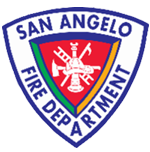Blog by Stuart Sprung
Training Specialist, Oceanside Fire Department
If you’re like me, you’ve probably never been able to make one of those PIO (Public Information Officer) training classes or seminars. As a result, your training on how to handle the media during incidents is limited to those fleeting moments when a reporter’s microphone is in your face.
If you’re in the fire department, and this hasn’t happened to you yet, rest assured, it will one day. Here are a few things to keep in mind when that day comes:
Just about every department has its own policy for handling media requests. Its important to know your policy and understand the ramifications of straying from it.
Each department should have a point person, or a public information officer (PIO), who is trained and experienced with interacting with the media. If you’re working at a fire or other major incident, stopping to interact with the press is not your priority, and could even be unsafe for you, your co-workers and even the media. So whenever you are asked to stop and comment, its best to politely direct them toward the PIO, battalion chief or whoever it is that is responsible for this duty.
PIOs know what to say, they understand the bigger picture, and they have all the facts. It’s key to keep the information being distributed consistent and accurate. There have been incidents in the past where an organization didn’t have the proper structure for dealing with the press and the wrong message was disseminated. That can turn into a political nightmare, so be careful.
That being said, it’s also very important to understand that a good rapport with the media is crucial. Although it’s the PIOs job to nurture their relationship with the media, we have to remember that we are all public representatives for our agencies.
For most incidents, a fire department PIO will use a press release, with specific details about an emergency, to distribute information. This helps keep the media from digging around and funnels questions back to one person, the PIO.
One thing for the fire department PIO to remember is that accuracy is his main priority with any and all information released. Small details, like the exact spelling of a name, are vitally important for reporters. The information reporters need to do their job is rather simple — who, when, where, what, why and how — but it has to be accurate. PIOs will feel pressure to get information out quickly, because time is crucial for reporters, but accuracy must come first.
If someone in the press approaches you after a serious accident, where there may have been a fatality or a serious injury, its absolutely paramount you don’t offer up any opinions. Saying the wrong thing can be used against you and your department. Again, by far your best move is to tell the reporter to speak with the PIO.
Another important consideration is the safety of the media themselves during potentially dangerous incidents. Although reporters and camera operators are for the most part professional and maintain a safe, respectful distance, there are times when they are unaware of hazards. While the police are very knowledgeable and effective at maintaining crowd control, sometimes they are overwhelmed or otherwise occupied.
So it becomes everybody’s job to maintain a safe scene. If you happen to notice a media member too close to a potentially hazardous scene, don’t be afraid to make contact with them, and courteously inform them of the hazard. Also, do not hesitate to inform your company officer or IC. Keep in mind that the media have rights to a presence in the public domain. In fact, unless its a crime scene, there are virtually no limitations to how close they can come. The most we can do is to inform them why its unsafe, and in my experience, they respond favorably to direction.
Lastly, don’t forget that your fire department can use the media for your own purposes as well. In a recent twin-engine plane crash in Oceanside, Calif., it only took one hour to recreate the events that led to the crash through eyewitness accounts that were given through the media and discussion boards attached to the story’s articles.
The day of real-time information is here, and we can use it to better understand why certain emergencies happen.
About the Author
After graduating from the University of California, San Diego Stuart Sprung completed his paramedic training and joined the San Francisco fire department as a firefighter/paramedic. He also worked as a flight medic for FEMA. The next 16 years gave him experience responding to thousands of federal, state, and local emergencies. Stu currently functions as a commercial pilot for a financial institution. He is now a fire training specialist for the Oceanside Fire Department.


 The
The